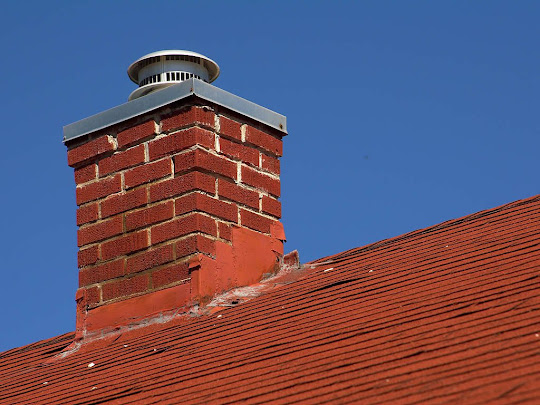Reasons for Chimney Damage
An essential component of both your house and fireplace is your chimney. Its failure to operate effectively puts your safety at risk. To the untrained eye, several symptoms of chimney deterioration could seem like ordinary wear and tear. In addition to moisture issues and chimney fires, a broken chimney may even pose a risk for carbon monoxide poisoning!
What are the reasons for chimney damage?
Chimney damage is not a good sign no matter what the reason is. Watch out for these typical indications of chimney damage as under.
- Creosote buildup
It is unavoidable that your chimney contains creosote if you burn wood in your fireplace. The smell from combustion enters your chimney, cools down, sticks to the flue’s walls, and creates deposits of creosote- a tar-like, Highly flammable substance. A significant chimney fire could result from allowing creosote to accumulate without routine cleaning or inspection. The only way to get rid of creosote accumulation and stop a chimney fire is to schedule a routine chimney sweep and inspection at least once a year.
- Problems Using Mortar Joints
In the end, wear and tear-related problems are going to occur even if we take the time to repair a chimney’s mortar joints properly. The chimney and roof will be subjected to moisture due to deteriorated or damaged mortar joints, and moisture is the source of many issues with our homes. Even worse, heat and smoke will be able to enter spaces they shouldn’t be able to because of joint cracks. We have to act straight away if we see evident deterioration or cracks in the mortar joints on our chimney. We need to be cautious to inspect the chimney’s outside as well as its inside for any signs of deterioration.
- Age
Even strong chimneys built with high-quality materials and expert craftsmanship have an end date. Because of all the temperature variations they undergo over many years, mortar and bricks eventually decay. Typically, the first indication of age-related chimney deterioration is cracking, which enables water to enter the system.
- Weak Building
Poor building also leads to chimney deterioration. This may maybe most difficult to determine since, to the untrained eye, a badly constructed chimney might not appear all that different from one that is constructed correctly. Make an appointment for a visit with one of our chimney professionals to ensure your peace of mind. In this manner, you can precisely evaluate the state of your chimney and we can develop an appropriate course of action.
- Broken Crown
For your chimney to be shielded against outside damage, a chimney crown is necessary. If you do not have a crown protecting your chimney, animals, snow, and rain will all make it inside. Significant damage to a chimney may result from even a tiny crack. This means that you should fix any apparent harm to the cap of your chimney. Smaller weather-related fractures can be easily fixed by replacing them. However, the crown could need to be replaced if you see larger holes or stones that are collapsing.
- Climatic or seismic activity
Even while chimneys are robust and durable, they generally cannot survive an earthquake, a lightning strike, strong winds, or hailstorms. This may be especially true for older chimneys. You might be able to observe that the chimney has been damaged after any of these events. On the other hand, there can be extremely minor damage that is hard to notice but has the potential to become a significant issue. To be safe, it is advised that you arrange for a chimney check following any significant weather or earthquake event.
- Blockages
Anything from animals building nests to a simple collection of soot and creosote might clog your chimney. Whatever the reason, a blockage can result in a dangerous carbon monoxide build-up in your house. Too often, people don’t become mindful of a blockage until they try to light a fire in their fireplace and see smoke rising upward. This issue can be found for you before you light the season’s first fire with an easy chimney inspection.
- Chimney Leaning or Tilting
A leaning or tilting chimney is an enormous issue that has to be fixed right away by an experienced chimney mason. A chimney must be firmly fixed to your house’s structure, standing tall and straight. Your chimney may indicate serious structural issues if you see it falling to one side or leaning away from the home. Water damage, earth settling, and foundation problems are the main causes of leaning chimneys. Regardless of the reason, a leaning chimney represents a significant safety hazard and must not be disregarded.
.jpg)
.jpg)
.jpg)

Comments
Post a Comment